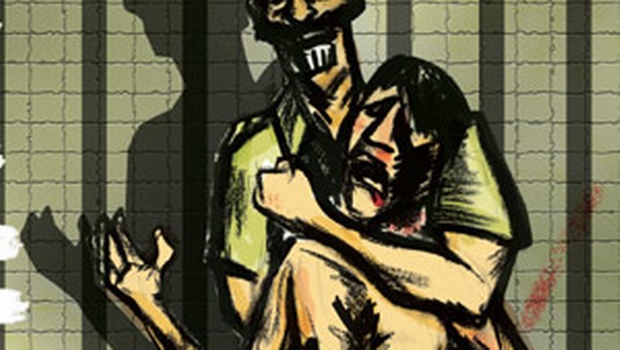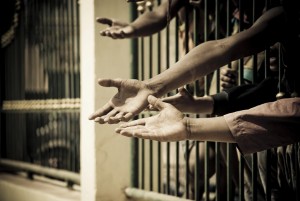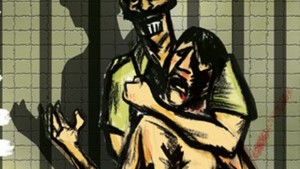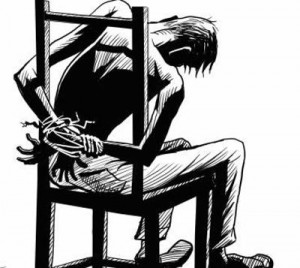This article is written by Sakshi Bhatnagar, a student of National Law University, Odisha, Aditi Mishra and Lavanya Rai, students of ICFAI Law School, Hyderabad. They delve into the question ‘who is actually responsible for custodial deaths?’ and also tries to analyze if custodial violence is in any way justified.
Introduction
Custodial death is the occasion of the demise of a person, who has been confined by the police on being indicted or being under trial. They can be arranged into three general classes: death in police care, death in legal guardianship, and death in the authority of safeguard/paramilitary powers. The idea of custodial death isn’t new for Indian culture.
Since the British guideline, individuals have been kicking the bucket in the police guardianship during an interrogation. India has over and oversaw the essential thing privileges of the detainees being broken and the utilization of compulsion and torment to take the ideal explanation. The police organization is constantly scrutinized for custodial deaths, torment, and the utilization of unlawful methods during the interrogation.
As the police are state subjects, the brunt of the claims of institutional homicide must be borne by the legislatures of the particular states, where the police perpetrate such violations. The colossal number of custodial deaths in the nation highlights the far-reaching utilization of torment on account of the police, who have no respect for the human poise of detainees.
The concept of custodial death is not new for the Indian society. Since the British rule, people have been dying in the police custody during investigation. India has time and again witnessed the basic fundamental rights of the prisoners being shattered and the use of coercion and torture to take the favourable statement. The police administration is always criticized for custodial deaths, torture, and the use of unlawful means during the investigations. Wikipedia describes the term ‘custodial death’ as ‘death of a person in the custody of the police, prison service or other authorities.[1] It’s legal validity is till date a controversial issue and is always debated as the popular retributive-deterrent philosophy has validated this incarcerational barbarity.[2] Though the authorities are legally bound to provide adequate necessary amenities and ensure the safety of the inmates by providing them a healthy environment which includes timely medical assistance, but the real scenario is different from what the legal implications suggest. It is also seen that mostly the persons belonging to poor sections of the society or the ones that from the depressed castes face this cruelty in prison.
History of Judicial Inquiry
The correction to the CrPC was done quite a while ago. A discussion was drawn by the support work of human rights activists that had started in any event 10 years under the steady gaze of the law was revised.
Inside long stretches of its constitution, in 1993, the National Human Rights Commission (NHRC) gave its first-ever rules identifying with custodial passings and assaults. District judges and police directors were coordinated to present a fundamental report on the episode within 24 hours of its event.
Also, the Law Commission got the issue of ‘Custodial Crimes’ for its 152nd report distributed in 1994 and expressed that, “Regardless of protected and legal arrangements defending the freedom and the life of an individual, the developing occurrence of custodial torture and passing have become an upsetting factor in the general public and the bloody stories of dehumanizing torture, ambush, and demise in the care of police being reported nearly in each morning paper.”
The law commission had seen that official justices or the district authorities just took a gander at these inquiries as customs and “the discoveries didn’t rouse certainty”.
The law commission suggested twice (in its 113th and 152nd report) the addition of Section 114-B into the Indian Evidence Act 1972, which turns around the weight of confirmation. This is, if there is evidence that the injury was caused during the guardianship, the court may assume that the police officer having care of the individual caused it. This proposal has not yet been taken up by Parliament.
In 2018, the SC, truth be told, affirmed the Victim Protection Scheme in Mahendra Chawla v. Union of India case. While the mechanism was long past due, the viability of its usage stays dubious, given that the scheme relies on the danger appraisal examination defined by the police.
Domestic and International Scenario
The issue of premature death in prison exists not only in the domestic spaces but is also found in the international scenario. Countries such as Bangladesh, Algeria, Argentina, Burma are aware of the presence of this evil practice on their territories. Even the United States of America is not untouched by the issue of custodial violence. 38 deaths in Police custody have been reported in England and Wales between April 2003 to March 2004, as shown by a Joint Committee on Human Rights under the authority of House of Lords and House of Commons in 2004.[3] Amnesty International, in one of their articles in 2013 urged the Malaysian authorities to take immediately steps against the rising number of deaths in police custody, some of which were caused by torture and others by ill-treatment.
The situation in India is not very different from the international one. The Times of India, in November 2013, stated that in the preceding five years, around 12000 people suffered tragic end due to torture that is done on them either in jail or police stations.[4] As per the official data, there were 32 deaths in police custody or disappearance of persons from detention who were remanded to such custody by the Court during the year 2014. Among these, the highest were reported in Andhra Pradesh (16). [5] These were the ones who had been sent by the Court under the order of remand. National Crime Records Bureau reports on its official website that there were in total 61 deaths or disappearances of persons from police custody in 2014. These were the people who were not sent by the Court to remand. These figures depicted a decline of 37.1% over the preceding year (2013) when this number rose to 97.[6]In their research study, the Police Complaints Authority (PCA) has mentioned about extreme vulnerability of those who die in the police custody and have found that in the period 1998-2003, there was an over-representation of ethnic minorities in deaths in police custody.[7]
Illegal Arrest and Detention
The powers given to the Police administration for the purpose of dealing with the crimes in the society are many times used by them to implicate innocent and poor people in false and fabricated cases under local and special laws such as, Excise Act, Arms Act, Gambling Act, Suppression of Immoral Traffic Act, Motor Vehicle Act etc. And it is an accepted fact that such arrests mostly lead to immense physical and mental torture on the person arrested, due to which, he/she ultimately commits suicide in the prison or dies because of the torture. The National Police Commission in 1981 admitted that around 60% of total arrests made by the police are unnecessary and unjustified.[8]
One of the most reported cases regarding illegal detention was of the two Adivasi boys by Kerala Police in the year 2004-05[9], where the Christian Cultural Forum, Kollam, Kerala, submitted a complaint alleging that police officials of Agali in Attappaddi in Palakkad district of Kerala arrested three ‘Adivasis,’ Manikandan, Parameswaran and Kuppama on 25.5.1997 and as per the facts, they were kept in illegal custody for 23 days. Kuppama, one of these people was female and was beaten black and blue by the police. Chilli powder was stuffed into her vagina and as per the complainant, the Circle Inspector had falsely implicated around 100 Adivasis[10] in fabricated cases. There was a feeling of terror in the Adivasis due to which they were forced to leave their houses.
Another incident took place in the year 1997-98 in the state of Rajasthan, where Shri. Baba Khan of Kota had alleged in his complaint that there were illegal detention and torture by the police and reported that he nad his two brother-in-laws were forcibly taken away by the police authorities, detained and tortured severely. The cognizance was taken for this complaint and the Chief Secretary along with the Director General of Police, Rajasthan were asked to submit a report.[11] The report submitted by the State Police stated that the allegations were baseless and false but disregarding this; the Commission ordered an investigation into the matter. The investigation division established that the accusations were prima facie true.
Other cases mentioned by the National Human Rights Commission include the case of Shri. Raghubir Yadav of Uttar Pradesh, abduction of Rama Rao by Andhra Police[12], illegal detention of Anil Kumar and D.M. Rege[13]of Maharashtra[14]. Joginder Kumar vs. State of Uttar Pradesh[15] and D.K. Basu vs. State of West Bengal.[16]
What Causes of Custodial Violence?
Police system is the main arm of the democracy that deals with the common man directly. Hence, there arises an urgent need to prevent abuse of the power and direct it in the right direction. To achieve this, it is primarily very essential to study the reasons behind the problem of custodial violence. Under what circumstances, does an educated officer of law resorts to such inhuman tactics?
Work Pressure
Also, insurgent groups, which are nowadays cause chaos and massacre in many areas, consist of well-trained criminals who are highly motivated to their cause and do not reveal any information quickly.
In such a situation, the mental pressure becomes a reason for adopting brutality as a means to retrieve information from criminals. Further, we have been gifted with a concept embodied in the basic structure of our legal system which suggests that until and unless the guilt is proved beyond reasonable doubt. There are really few instances where this doctrine affects the law in a negative way. Because these restrictions are there, police at times fail to derive information from such hardened criminals and thus have no hard evidence in the court of law. Ultimately, the real culprit walks unharmed.
To Show Results
Once a case is recorded in the Police Diary, its status has to be filed in the court. To show better results, they sometimes resort to illegal arrests, unlawful confinement or detention of people and prove case against them. This has a dual effect on the legal system. First, the wrong person is detained and hence his liberties are violated, secondly, the real statistics about crimes are prevented from being come out, which effects the formulation of effective policies for that area. The legal system can never achieve its basic aim of justice, if such a situation persists for long.
Reformation
Sometimes, the police have to resort to the tactics of violence, to prevent the criminal from committing the crime again. They believe that showing the worse consequences of the act will create fear in the mind of the culprit and thus prevents the possibility of committing it again. The fear of the third-degree methods also changes the perceptions of his subordinates of getting away easily. In some cases, brutal tactics produce the above-desired result but in most situations, the aim is not achieved.
Punitive Violence
There are a few misguided, although honest, police officers who believe in not letting the criminal go away unpunished. Such people believe that there is no better way of ensuring this but by the use of third degree torture methods. Usually, an officer who is morally affected by witnessing the crime wants to punish the culprit. Although, they do it for the betterment of the society, they have to face accusations of illegal detention and torture and have to prove it in their favor.
Laws for Prevention of Custodial Deaths in India
The Indian legislature has taken some steps in the form of Acts, Bills, and Suggestions, which aim at preventing the custodial deaths:
- The Prevention of Torture Bill, 2010 has been introduced in the Parliament, and Rajya Sabha has recently presented a report on it.
- The National Human Rights Commission has issued guidelines to be followed in case of custodial deaths and rape.
- NHRC has also issued guidelines for magisterial inquiry in the cases of custodial death.
Infringement of Fundamental Rights
Our constitution gives central rights to each resident of the nation which incorporates the denounced. Probably the most significant essential rights are presented as correspondence under the watchful eye of the law and equivalent insurance of the law (Article 14), Right to life and individual freedom, and right against self-implication (Article 20(3)).
These rights are accessible to the residents as well as to the outsiders. Occurrences, for example, custodial deaths are against the arrangements of the Constitution of India. On account of Maneka Gandhi v. UOI (1978), “the court saw that Article 21 not just ensures the individual against the meaningful law yet additionally stretches out the assurance to the methodology set down which must be reasonable, just and sensible.”
It has been held in a catena of decisions that in light of the fact that an individual is in police guardianship or kept or in custody, doesn’t deny of him of his essential rights and its infringement engages the individual to move the Supreme Court under Article 32 of the Constitution of India. Detention doesn’t deny one of his key rights.
Article 20 principally gives an individual the rights against the conviction of offences. These incorporate the standard of non-retroactivity of punitive laws (Nullum crimen sine lege) for example ex-post-facto laws along these lines making it an infringement of the people’s major rights if endeavors are made to convict him and torment him according to some rule.
Article 22 furnishes four essential rights concerning a conviction. These incorporate being educated regarding the grounds of arrest, to be shielded by a lawful expert of the decision, preventive confinement laws, and appearance before the Magistrate within 24 hours of the arrest of the individual.
The instance of Sheela Barse v. State of Maharashtra has given rules on the rights of the arrested people particularly ladies. The court for this situation likewise stressed the requirement for Magistrates to advise all arrested people regarding their rights. Rules were additionally given by the Supreme Court in D.K Basu v. State of West Bengal[7]concerning the rights of people in custody.
Current Status of Anti Torture Bill
-
India’s anti-torture bill has now been in a trance-like state for almost 10 years. The Central Government, through the Attorney General, told on 22.01.2019 that the draft of Prevention of Torture Bill, 2017, had been sent to all States for their criticism and remarks and that solitary eight States/UTs had answered as at that date. Significantly after impressive time has passed from the date of the Law Commission report, the Prevention of Torture Bill, 2017 has not been presented in the parliament yet.
Inability to Hold Police Accountable for Custodial Deaths
- Indian law requires a legal justice to direct an investigation into each custodial death. The police are relied upon to enroll a First Information Report (FIR) and the death investigated by a police headquarters or an organization other than the one involved.
- Each instance of custodial death is additionally expected to be accounted for to the National Human Rights Commission (NHRC). The police are moreover, required to report the discoveries of the officer’s request to the NHRC alongside the postmortem report. NHRC rules require the autopsy document to be recorded and the dissection report to be set up as indicated by a model structure.
- India has sanctioned the International Covenant on Civil and Political Rights and marked the Convention against Torture and Other Cruel, Inhuman or Degrading Treatment, the two of which forbid torment and merciless, barbaric, and debasing treatment or discipline. They additionally accommodate the specialists to arraign the authorities dependable. These responsibilities are reflected in Indian Penal and state laws that censure torment and give some procedural protections against it.
- In the case of State of MP vs Shyamsunder Trivedi, the Supreme Court observed that that police are limited by the “ties of fraternity”, would like to stay quiet instead of helping the court. They are furthermore alleged to destroy evidence and intimidate the victims.
- This sort of police conduct regularly gets defended as “stress” or on the grounds that “the police are average citizens as well”. This is a contorted contention that permits the police, on one hand, to be vain, wrathful macho men, and then again, furnishes them with arms, shut spaces and resistance from results.
Conclusion
Certainly, the present custodial laws have not been able to direct the practice of use of third-degree methods in the right direction. The current situation in our country is that whenever a prisoner dies in the police custody, the first blame comes from the police authorities. Before blaming them or any other person or body, the circumstances of which the death was caused must be ascertained. It is not suggested that not getting required information from the criminal should be made a ground for giving legal validity to this method. Also, it is the duty of the prison administration to provide proper facilities of medical, infrastructure, sanitation, food, security to the prisoners and a monitory body to only review it but also keep an eye on the other activities inside the prison.
“Today, there is a stunning quiet from a huge segment of those very individuals who requested activity in George Floyd’s case. At the point when it is nearer home, our voices ought to be raised considerably stronger. Nobody ought to pull off homicide. In particular, those whom we trust with guaranteeing peace”
The deaths of Jayaraj and Fenix happened not long after the executing of George Floyd by a cop in the United States, touching off fights against police utilization of unreasonable power against Black individuals. India ought to endorse the Convention against Torture and Other Cruel, Inhuman or Degrading Treatment or Punishment, and carefully authorize laws and rules on arrest and confinement set out in the Code of Criminal Procedure.
Notwithstanding professing to be the place where there are Buddha and Mahavira, in the standard Indian story, torture stays a fundamental malevolence, and tit for tat remains the rough perfect of equity. This ruthless, retributive thought of equity is the underlying driver of a powerless enemy of torture enactment in India.
The man battles continues asking, at a point gradually his please and voice become throaty. At long last, just quiet.
[1]Wikipedia.com
[2]Constitutional Miscellany, V.R. Krishna Iyer, 2ndEdn (2003) p.149, 151
[3]Accessed at: www.parliament.uk
[4]11820 Custodial Deaths in Five Years, DhananjayMahapatra, Times of India (24.11.13)
[5]Accessed at: ncrb.nic.in
[6]Ibid
[7]Accessed at: shodhganga.inflibnet.ac.in
[8]Ibid
[9] Accessed at: nhrc.nic.in/Police cases.htm#y25
[10]Case No. 208/11/97-98
[11] Accessed at: nhrc.nic.in/Police cases.htm#y7
[12]Case No. 5828/95-96/NHRC
[13]Case No. 1427/13/98-99
[14]Case No. 517/13/98-99
[15]AIR 1994 4 SCC 260 Cr. LJ
[16]AIR 1997 SCC 610
 Serato DJ Crack 2025Serato DJ PRO Crack
Serato DJ Crack 2025Serato DJ PRO Crack















 Allow notifications
Allow notifications



